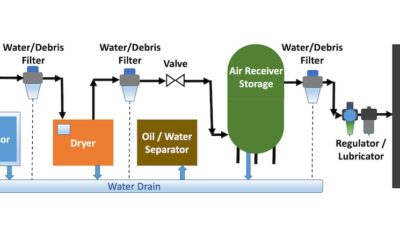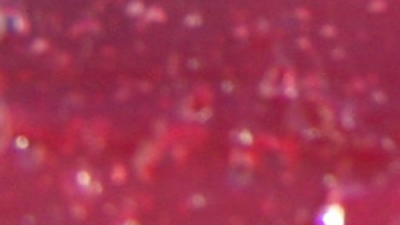When selecting a finish, to protect employees and visitors under all conditions, it is wise to make sure whatever finish you select results in a high-traction surface, even when wet
Untreated bare concrete flooring requires frequent, often daily, maintenance to protect it and keep it clean looking. That’s why most concrete floors are not left untreated. Finished concrete can be highly attractive, long-wearing, and easy to maintain. Options include unpigmented wax, colored wax, epoxy, and wet or dry polishing systems.
Factors to consider when picking a finish for your concrete floors include:
• Initial cost
• Durability of finish
• Maintenance requirements
• Long term maintenance costs
• Achievable traction and slip resistance
• Downtime of the plant during and after finish application and periodic refinishing
According to the National Floor Safety Institute, walking surfaces are the cause of 55% of slips, trips and falls. So when selecting a finish, to protect employees and visitors under all conditions, it is wise to make sure whatever finish you select results in a high-traction surface, even when wet.
Several floor finishing methods can provide protection of the near surface wear zone (the top 1/16th to 1/8th inch) from general use and abuse. Each method has its own characteristics, strengths, and disadvantages.
Methods include conventional buffing floor wax; thin-film chemically resistant epoxy coatings and moisture-cured urethanes, commonly referred to as thin film coatings; and wet or dry grind polishing systems, with or without the application of penetrating chemical hardeners and densifiers. For full benefit, especially from thin coat films and polishing treatments, floors should be flat and smooth at the onset. For all finishing treatments, visual results are dependent on the original condition of the floor.
Wax
Buffing wax is often a good, inexpensive, albeit not particularly durable, solution for concrete floors. Short term benefits abound. A single application is cheap. The more applied the shinier the floor. But only to a point. Too many coats without stripping earlier coats leads to waxy build-up and the floor will be more prone to show the scratches, scuffing, and cutting that comes from everyday wear. At that time, it becomes necessary to remove earlier coats and start the process again, resulting in a lot of labor by maintenance staff. Over thirty years, the labor costs add up.
To maintain a newly waxed concrete floor, clean frequently with a damp mop. Dry-buffing the floor periodically between waxings removes a thin surface layer of wax and prevents build-up of tracked dirt or grit or dust.
Thin film coatings
Thin film coatings provide a skin of hard epoxy or urethane resin that protects the top of the concrete floor. The coatings are shiny, can be colorful, are very resistant to chemical attack and stains, and generally resist dusting.
Numerous types of epoxy floor coatings are available, including transparent, pigmented, high gloss, and solvent-free, making it easy to satisfy specifications.
All-purpose coatings can be aesthetically pleasing while providing protection against mild corrosion and moderate indoor vehicular traffic, including forklifts.
Some manufacturers offer anti-skid add-ins that help ensure traction. Special chemical resistant epoxies can protect flooring from non-oxidizing acids and alkalines.
Epoxies can be low cost, durable, and easy to apply. However, they often show signs of aging fairly quickly. The thin film is durable for a limited period of time, and then generally begins to discolor, peel, and show scratches, chips, cuts, and other signs of general wear. Typically, a coating can be expected to last anywhere between two and five years, usually requiring a sanding and a thin topcoat somewhere in that time frame.
Once the coating has deteriorated beyond what a thin topcoat can disguise, to regain that new floor look, it becomes necessary to remove the entire aging coat (and anything furniture, shelving, etc. on the floor) and lay down a new coat.
While the initial cost of a thin film coating may seem low, the cost of reapplication every three to five years (and the cost in downtime to the plant during the process and drying time) should be considered as part of the overall real cost.
Also factor in the drying time. Some epoxies dry quickly – drying to the touch in as little as an hour and capable of accepting light foot traffic in as short as 24 hours. However, manufacturers often caution that the application could require 48 or even 72 hours before furniture be put in place. And some applications may require a waiting period of up to two weeks before a forklift can ride over the floor without risk of damaging the finish or before cleaning with a cleaning solution. Also, thin film coatings become slippery when wet, which can lead to slips and falls.
Wet or dry polishing
Wet or dry polishing can provide very good aesthetics, delivering in an attractive wax-like sheen, though not one that can quite replicate the shine of an epoxy or urethane finish. Depending upon the particular polishing process, it can result in a high-traction floor.
For wet or dry polish, first time cost is moderate and the maintenance can be inexpensive for life of the floor, which is easily maintainable with water and mild cleaning and conditioning detergents.
Wet polish applications use water on the grinder to keep the blades from wearing out. The process can be much messier to clean up after than a dry polish process.
A dry polish process that uses a HEPA filter vacuum air purification system to collect dust generated during the dry abrasive grinding and smoothing process can keep a jobsite virtually free of any airborne dust, eliminating need for special protection or isolation of the work area and minimizing need for clean-up of dust after the work is complete.
Dry polishing treatments may include the application of a hardener/densifier which changes the molecular structure of the top surface of the concrete permanently, making it permanently harder and denser. The hardener/densifier does not wear off and the sheen can be easily maintained with a bit of regular maintenance with a broom and a damp mop.
Because the hardener/densifier is not a coating, but rather becomes a part of the concrete flooring itself, the surface continues to breathe. There is no excess moisture and water vapor build-up. Spilled oils and other chemicals don’t soak in but rather wipe right up. The floor maintains the natural slip resistance of the original bare concrete. Furthermore, a dry polished, hardened and densified concrete floor can eliminate concrete dusting and resists moisture and rot, eliminating concerns about the growth of hazardous mold and mildew.
Dry polish systems use a series of increasingly fine diamond disks in a grinding machine for smoothing and polishing to a very high degree of shine. The application of the hardener/densifier occurs after the final polish, while the floor is still somewhat porous. The hardener/densifier is not a coating, but rather chemically reacts with components in the concrete to form a dense, non-porous hard crystalline compound in the top wear layer that spills do not penetrate. The newly formed compound does not completely seal the surface, enabling it to continue to breathe (so there is no build-up of hydrostatic pressure). It also eliminates dusting and micro-pitting of the concrete surface by abrasion over time.
For "green" projects or renovation, dry polish hardener/densifiers are available that are water-based, VOC-free, solvent free, and odorless (enabling adjacent work areas to proceed with business as usual), and that clean without need for any caustic or acidic cleaning compounds.
Polished, hardened/densified concrete floors can be permanently dyed in a wide choice of colors, monocolor, in a pattern or with a logo.
Dry polished floors have been proven to save up to 65% in on-going maintenance costs.
Greg Schwietz is the president of L&M Construction Chemicals, which produces chemical treatments for the construction, repair and protection of concrete and is the developer of FGS/PermaShine concrete polishing system. Visit them at www.lmcc.com and www.fgs-permashine.com 800-362-3331. Schwietz can be reached at [email protected].



